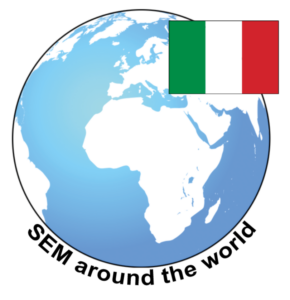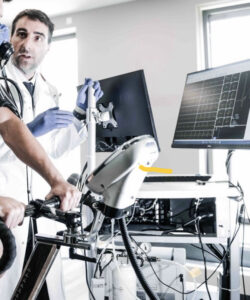We invited Dr. Franco Bidoglio to share his perspective on Sport and Exercise Medicine (SEM) in his home country, Italy.

Tell us more about yourself.
My name is Franco Bidoglio, and I am an Italian Sports Medicine Physician, MD. I have experience in sports medicine, sports traumatology, and sports rehabilitation thanks to my residency at the Sports Medicine Center of the University of Pavia (Italy) and international training at the FIFA Medical Center of Excellence in Aspetar – Doha, Qatar (medical internship), Isokinetic FIFA Medical Center of Excellence – Bologna/Milan, Italy (medical internship) and Paris Saint Germain Football Club, Paris (medical internship, thesis project). I deepened my expertise in sports and exercise medicine with a master’s degree in orthopaedics and sports injuries (Humanitas University of Milan and University of Bologna). I currently work both in Italy (athlete screening and rehabilitation) and in Switzerland for the Football Club Lugano (team doctor and consultant), the Hockey Club Lugano (team doctor and consultant) and the Ars Medica Clinic, a Sport Medical Base approved by Swiss Olympic (athlete screening, physical therapy for chronic diseases, sports injuries, and rehabilitation).

What is the path to becoming a sport and exercise physician/physio/scientist in Italy, and what are the main hurdles on this path?
You can start the specialisation process after graduating from medicine (six years). At the end of medical school, a yearly national exam determines residency speciality and location (regions/cities). The Italian Ministry of Education and Universities offers a limited number of residency places that exceed the number of medical doctors participating in the exam. In Italy, there is a formalised residency in Sports Medicine and Physical Exercise. The residency lasts four years. Full-time training includes rotations between sports medicine departments (cardiology, rehabilitation, sports science, sports physiology, radiology, internal medicine, orthopaedics, and traumatology). Italian sports scientists are trained at universities through a bachelor course in the sports field. Allied healthcare professionals (e.g. physiotherapists) can customise their basic training through in-depth courses, including those external to universities. The actual training in sports and exercise medicine is intended for physicians only. The main barriers to becoming a sports and exercise medicine physician are acquiring a position and tailoring the residency (e.g. international experience, targeted training in a specific field of sports medicine). Each residence must respect the ministerial programmes; however, the needs of the hospital departments in which the training periods take place, and the professional orientations of the local directors can condition compliance with the ministerial guidelines.
How developed is collaborative work in SEM in Italy?
The possibility of creating a network of specialists linked to the world of sport is fundamental for comprehensively managing athletes. In the case of sports clubs or federations, athletes can use different professional figures who collaborate as they are part of the same staff. Furthermore, the possibility of using consultants external to the team should be remembered. These consultants may belong to hospitals, research institutes or universities. Both professional athletes and amateur athletes have the opportunity to access sports medicine services and treatments. Fortunately, Italy’s tradition of sports medicine and physical exercise is well established. Over the years, this has allowed for the training of high-profile professionals in all sectors of sports medicine (sports cardiology, sports radiology, orthopaedics and sports traumatology, sports rehabilitation, motor sciences and exercise physiology).
Are exercise physiologists/scientists integrated into your healthcare system, and does health insurance cover their services?
As mentioned above, both professional and amateur athletes can access sports medicine services and treatments. However, sports physiologists and scientists are not always integrated into the Italian health system. Even private health insurance only covers some of their services. Athletes can spontaneously decide to rely on these professionals, fully cover their expenses, or, following the advice of medical specialists, it is possible to request reimbursement from private insurance funds. At the request of the specialist doctor or in the presence of particular clinical conditions (e.g., chronic diseases, rehabilitation process), the national health system can cover the costs of some services.
What is done in Italy to promote SEM among students and young professionals regarding research and clinical opportunities?
The culture of sports medicine is deeply rooted in Italy due to the following:- mandatory medical certification of fitness for sports practice,- high level of international competitiveness in many disciplines (e.g. football, athletics, motorcycling),- high scientific standards in the world of sport,- emphasis on health issue prevention. All of these factors facilitate the dissemination of the culture of sports medicine in the athletic and non-athletic populations. This is made possible by university (and non-university) training courses in medicine and sports sciences aimed at doctors who intend to specialise in this branch of medicine, but also at young graduates who want to enter the world of sports as professionals.
Finally, if you were Harry Potter, what would you change to SEM in Italy?
If I were Harry Potter, I would like sports and exercise medicine to establish sports hospitals/clinics capable of managing all athlete problems using a 360-degree lens (e.g. athletes screening, sport science, rehabilitation, surgery).